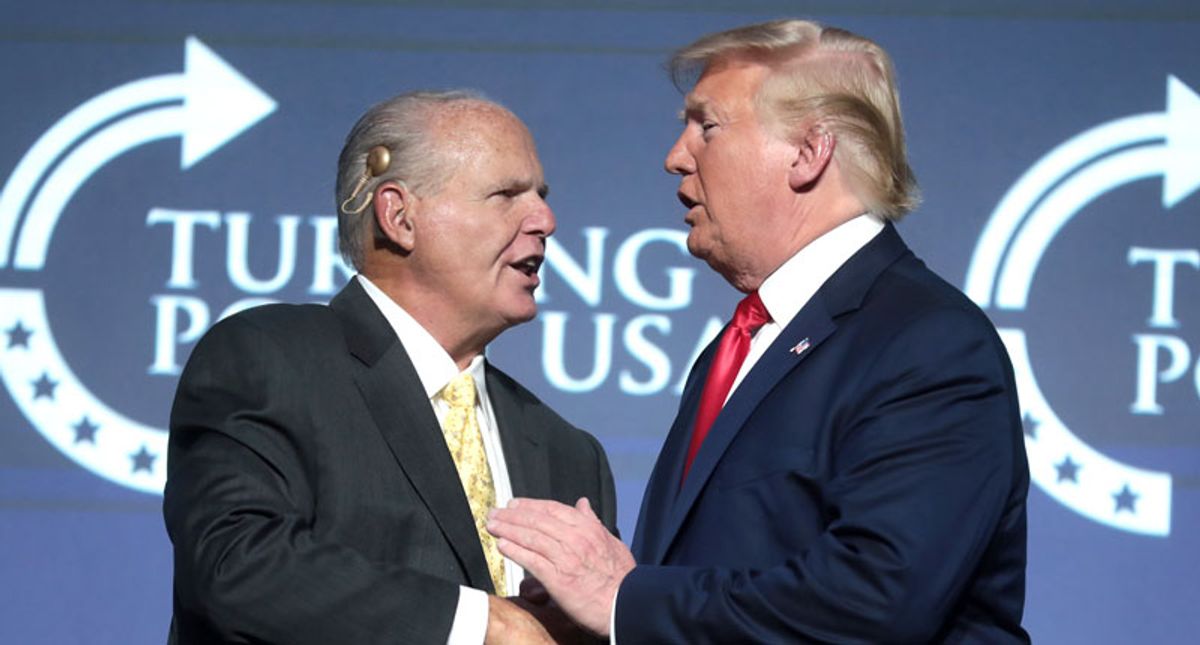
Following the end of the Cold War, the Republican Party reinvented itself in the 1990s in a manner which resulted in the dominance of MAGA Republicans today according to a new analysis.
Gabriel Debenedetti explored the dynamic in a New York Times review of the book Partisans: The Conservative Revolutionaries Who Remade American Politics in the 1990s by Nicole Hemmer.
"American political history is not always terribly complicated, but even its simplest lessons can be little match for our collective amnesia. How surprised should we be, really, to learn that “America First,” one of Donald Trump’s favored campaign slogans, was used by a pair of also-ran presidential candidates in 1992 — the hard-core right-wing commentator Pat Buchanan and the former Ku Klux Klan leader David Duke? 'How, exactly, did we get here?' is an urgent question. But if the inquiry is one of the defining nonfiction genres of the last half-decade, some of its more common iterations now risk feeling stale," Debenedetti wrote.
Buchanan worked for GOP Presidents Richard Nixon, Gerald Ford, and Ronald Reagan before mounting a primary campaign against incumbent President George H.W. Bush in 1992. Buchanan ended up endorsing Bush and at the 1992 convention said, "There is a religious war going on in our country for the soul of America. It is a cultural war, as critical to the kind of nation we will one day be as was the Cold War itself. And in that struggle for the soul of America, Clinton & Clinton are on the other side, and George Bush is on our side. And so, we have to come home, and stand beside him."
ALSO IN THE NEWS: 'We like a fighter': Philly congressman mops up post-Biden speech MAGA tears
Bush ultimately lost re-election.
"The Buchanan moments, especially, leap off the page. (The “America First” slogan originated not with him or with Duke but with 1930s-era Nazi sympathizers.) After Buchanan’s 1992 presidential campaign, the G.O.P. platform for the first time endorsed building 'structures' on the border with Mexico. You see where this is going," Debenedetti noted. "Still, Hemmer does not pretend to find novelty in the simple conclusion that Trumpism is the product of a decades-long right-wing drift. She is more specific. She illuminates the consequences of mainstreaming provocative conservative opinions as the radio and television landscapes modernized."
"Buchanan may be an afterthought for today’s right, but Hemmer considers him central to its development. He is the man who simultaneously exposed the political shakiness of the post-Reagan mainstream conservative coalition and the possibility of shaping modern policy discussions around white racial anxieties," Debenedetti wrote. "Limbaugh is only barely secondary, announcing himself as a player in electoral politics by backing Buchanan in 1992 and then developing into a cultural phenomenon with his zeal for racist and sexist provocation just as cable news programming found its footing and modern talk radio blossomed — granting him significant wealth and incentive to push the envelope as far as it would go."
Read the full report.




